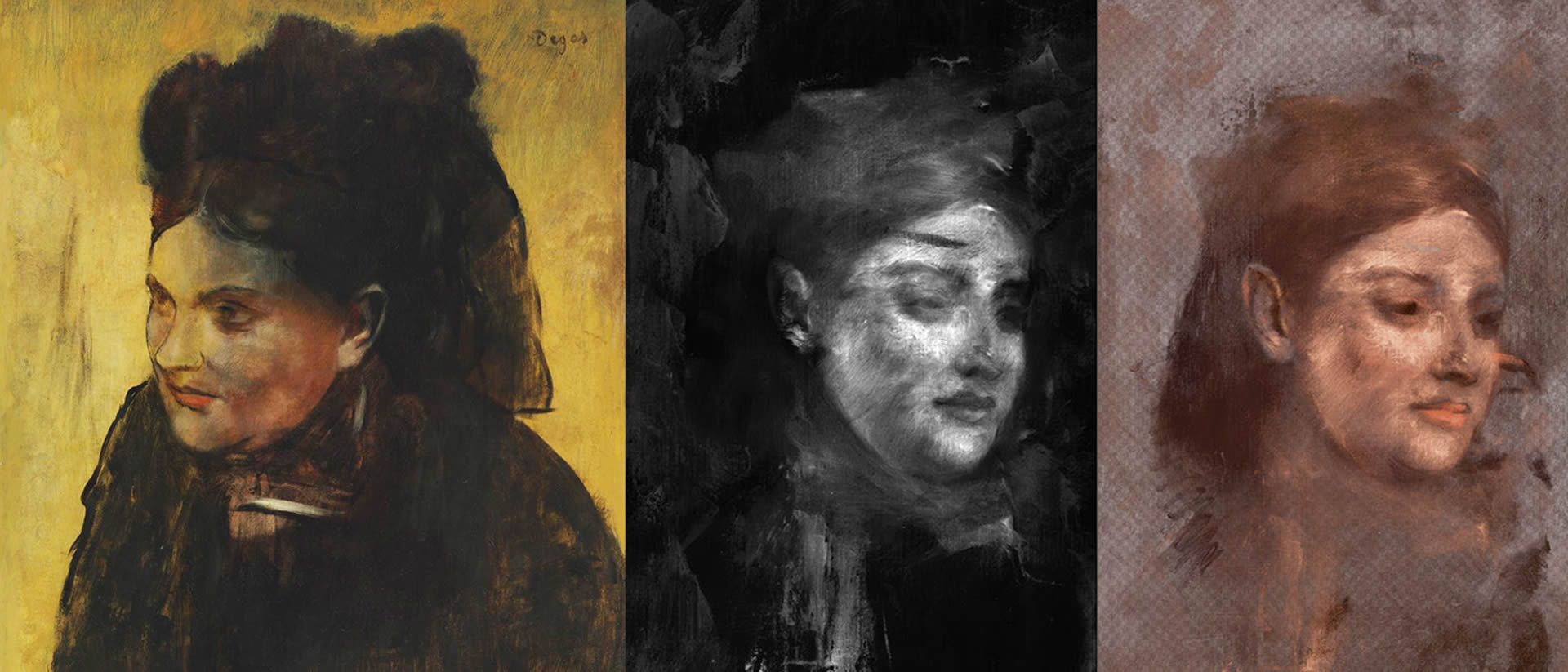
A mysterious face

Paintings by old artists frequently turn out to be true treasuries for art historians. The top brushstroke of the paintings we admire in the museums covers subjacent ones, earlier works of the painters. The artists sometimes painted over their canvasses several times before they felt comfortable with it, or many years later.
A team lead by David Thurrowgood of the Queen Victoria Museum and Art Gallery, Tasmania showed that even totally different motives drowse beneath the nowadays visible pictures. The researchers scrutinized the painting “Portrait of a Woman” by Edgar Degas, which he painted around 1778. Light played an important role in this process. The researchers screened the painting by using a newly developed X-ray fluorescence method. The picture is exposed to roentgen radiation. The X-rays interact with the different components from which the colors of this time were blended. For example, the combination of copper and arsenic indicates that the artist used a green copper arsenite pigment. Zinc is an indicator for the colors white, cobalt for blue.
Degas’ painting shows a woman wearing a big, dark headgear. The researchers, however, assumed that the visible portrait is might not the whole truth. This is because darker shapes shimmer through the face of the woman, which indicates the existence of a second face. “We recognized early that the underlying portrait is looking in the opposite direction as the woman in the foreground”, Davis Thurrowgood says. Nevertheless, the researchers have not been able to uncover it until now.
With the help of X-rays the researchers now reconstructed the hidden portrait non- intrusively. The distribution of the hidden pigments gave information about how Edgar Degas used shapes and colors. He painted over the original painting about nine years later, which is a common practice for artists looking for a convenient canvas to use.
The hidden picture was completely reconstructed by the scientists. It shows a young woman. She is looking to the right and has dark hair. “We assume that this woman is the model Emma Dobigny”, says Thurrowgood. Emma Dobigny posed for several painters at that time. Her facial features are so prominent that the researchers presume that they can see her face.
The scientists assume that Degas painted the face of the young woman in only one single session. The ears, however, seem to have caused Degas some problems. “It seems that Degas needed many attempts for it”, speculates Thurrowgood. “The elemental distribution in the area of the ears tells us that they might have been too pointed initially, before Degas adjusted them”, Thurrowgood presumes.












